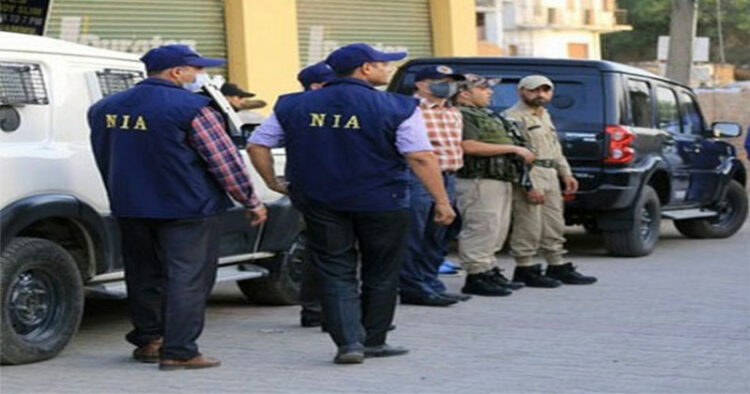On April 27, a special National Investigation Agency (NIA) court in Guwahati convicted five persons in the 2011 People’s Liberation Army (PLA)-Naxal nexus case related to a criminal conspiracy to threaten the unity, integrity, security and sovereignty of India, said the agency.
Those convicted have been identified as PLA’s-N. Dilip Singh of Manipur, Senjam Dhiren Singh of Assam, and Arnold Singh of Assam. The others are Indranil Chanda and Amit Bagchi– both from West Bengal and have links with Naxals.
After extensive hearings, on April 26, the five accused were convicted under charges of 121A of the Indian Penal Code and Sections 18, 18A and 39 of the Unlawful Activities (Prevention) Act 1967.
The NIA had registered a suo moto case on July 1, 2011, on inputs that the PLA, an illegal terrorist organisation, had hatched a conspiracy to destabilise the country with the support of CPI (Maoist) or Naxals.
“CPI (Maoist) leaders had agreed to recognise and support the separatist activities of PLA for the creation of the northeastern state of Manipur, as a separate nation. The PLA leadership, on its part, decided to support the continuing war of CPI (Maoist) for overthrowing the constitutionally elected Government of India,” said the NIA.
Investigations revealed that PLA had established a liaison office in Kolkata, where a meeting was held between PLA/RPF and CPI (Maoist) leaders, the agency said. It said that modalities were worked out at the meeting for taking unified action for waging war against the Union of India.
“A bipartite meeting was also held between PLA/ RPF and CPI (Maoist) leadership in Jharkhand for imparting military training to cadres of CPI (Maoist) by PLA/RPF instructors.”
It further came to light during the investigations that the SS President of PLA/RPF had also complimented the General Secretary of CPI (Maoist) on attacking the security forces on April 6, 2010, killing 76 CRPF personnel in Chhattisgarh, said the anti-terror agency.
“Investigations also revealed that the PLA had provided logistics support to Maoist cadres and both groups were regularly communicating and exchanging e-mails. The accused persons had travelled to different places within and outside India, and created fake IDs and bank accounts under pseudonymous identities.”
Based on these findings, the NIA filed chargesheets in the case on May 21 and November 16, 2012, as well as on July 31, 2014, in the NIA Special Court, Guwahati.




















Comments